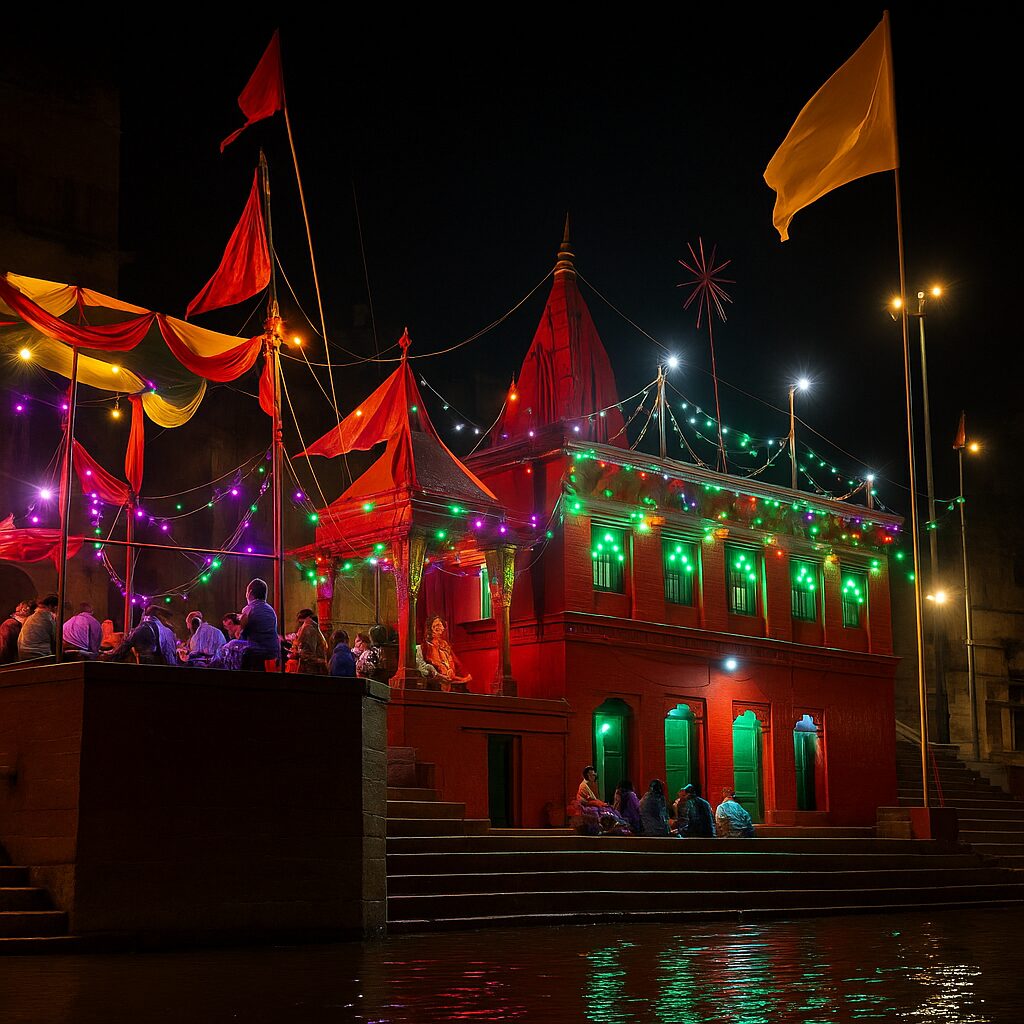Tucked along the sacred riverbank at Shitala Ghat, just south of Dashashwamedh Ghat, stands a modest yet deeply venerated shrine — the Shitala Mata Mandir, dedicated to Goddess Shitala, the deity associated with healing, health, and protection from diseases.
In the vibrant spiritual ecosystem of Varanasi, this temple quietly holds a place of deep emotional significance, particularly for local women, mothers, and traditional healers.
Who is Shitala Mata?
Shitala Mata is a folk goddess worshipped across northern India, especially in villages and towns. She is believed to cure ailments like smallpox, measles, and skin diseases, and to ward off epidemics. Her name, “Shitala,” means “the one who cools”, symbolic of her ability to soothe fevers and illnesses.
She is often depicted seated on a donkey, holding a broom, a winnowing fan, and a pot of healing water — all everyday items representing cleanliness, domestic life, and healing.
Temple & Ghat Significance
-
The Shitala Mata Temple is small in size but immense in devotion.
-
Located right on the ghat, the temple is integrated into the river rituals of Banaras. Devotees often bathe in the Ganga and visit the temple to pray for health.
-
Shitala Ghat, named after the temple, is not as crowded as the Dashashwamedh or Assi Ghats, making it a more serene and intimate spiritual stop.
Rituals and Beliefs
-
Women come here to pray for the health of their children and families.
-
Offerings typically include rice, curd, cool water, neem leaves, and sometimes clay pots.
-
During the summer months, especially March–May, special Shitala Puja rituals are held to appease the goddess and prevent heat-borne ailments.
Festivals
-
Shitala Ashtami (observed after Holi) is the most important festival here. Devotees observe fasts, cook food a day prior, and avoid lighting fire on that day, offering only cold food to the goddess.


